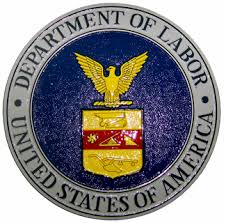Week in Review
So, what happened? Why did equities not undergo a substantial rally in response to the stronger-than-expected US labor report? Essentially, the primary reason for this strange discrepancy is that this document contained some other disturbing parameters which unsettled investor confidence. For example, the participation rate revealed that the US labor force declined by over 800,000 citizens during April. Another worrisome factor was that the average hourly income stagnated last month by remaining flat. Economists explained these predicaments by stating that the labor reports were eventually assessed to be weak on quality although strong on quantity.
The resultant confusion of the conflicting features of the labor report caused stocks to spike higher immediately after the releases only to pare their gains later in the session after more detailed investigations had been performed. Analysts advised that an additional month is now needed to confirm that a bullish trend is emerging as opposed to just a one-off event. However, the impressive job number did enhanced speculation that the US Federal Reserve will now consider instigating a hike in the national interest rate sooner that previously forecasted. Odds increase to 56% that such a decision will occur in June 2015 compared to 47% before the labor report was issued.
Investors were also prompted to adopt a more risk adverse stance as last Friday progressed in response to escalating tension in the Ukrainian/Russian crisis. A surge in violence dragged this precarious situation down to new levels of despondence which exerted further pressure on the financial markets. Reports emerged advising that two Ukrainian helicopters were destroyed by pro-Moscow separatists killing a number of crew members in the process. In addition, military aggression was initiated by the Ukrainian national forces with the specific intent of recapturing the town of Slaviansk, which is currently held by pro-Russian units.
What to Expect This Week
A number of important global economic indicators will be released during this coming week.
The European Commission will commence business by posting its latest economic predictions for the Eurozone. This data is expected to disclose that growth will continue to expand, albeit slowly, during both 2014 and 2015. The US Institute of Supply Management will then present its non-manufacturing PMI. Analysts will be keen to assess whether this key survey will validate the opinions expressed by the Fed last week when it declared that weather related issues have now totally subsided.
On Tuesday, the Reserve Bank of Australian (RBA) will announced its Interest Decision backed by an accompanying statement. The central bank is expected to emphasize the adverse impacts of a strong national currency. Later in the session, Spain will issue its unemployment rate which is forecasted to support the current declining trend especially as the holiday season has now commenced in full force. Great Britain is then scheduled to produce its services PMI for last month which is predicted to increase from March’s 57.6 to 57.8. Next, the Eurozone will post its Retail Sales figure which is expected to record a 0.3% drop during March. The USA will complete the day’s proceedings by releasing its Trade Balance number following by a key Economic Optimism Index. The former indicator should confirm a severely overdrawn status while the latter could generate a figure above 50 in response to a distinctive improvement in weather conditions in North America.
The Bank of Japan will launch Wednesday by issuing the minutes from its last monetary policy meeting. This document is not forecasted to reveal any major disclosures or surprises.
China will publish its eagerly awaited Trade Balance on Thursday. If this figure is worst-than-expected, then riskier currencies could take a hammering. Later in the day, the Bank of England will release its Interest Rate Decision. Expert consensus is advising a ‘no change’ verdict. The European Central Bank will then post its own Interest Rate Decision which again should disclose an ‘on-hold’ status. However, the subsequent press conference to be held by Mario Draghi, the ECB President, could generate some surprises.
Canada will finish the week by declaring its labor report on Friday. Many economists are predicting a sharp decline in the number of jobs created last month following the strong figure produced in March because of historical trends.



